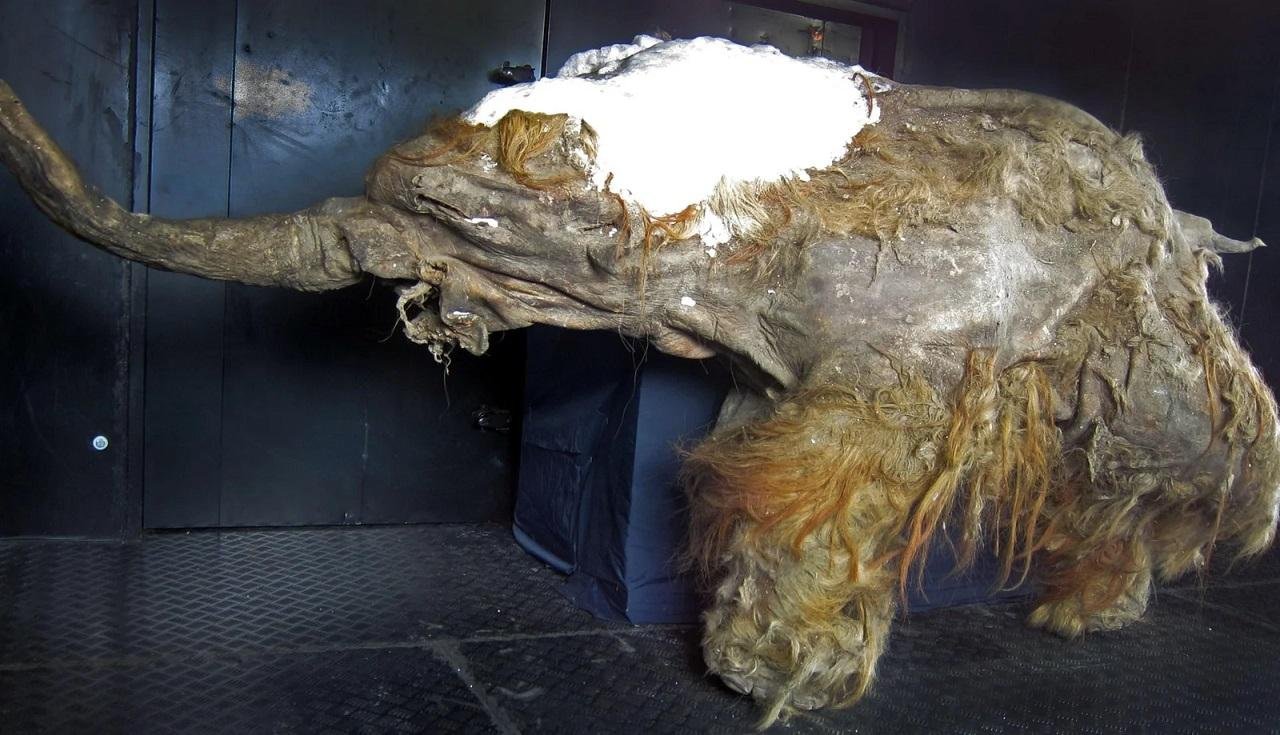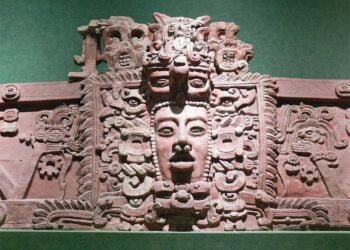Mammoths, the majestic creatures of the Ice Age, captivate our imagination and offer a fascinating glimpse into ancient human society. These colossal mammals, with their long curved tusks and shaggy coats, roamed the Earth thousands of years ago. In this article, we will explore the relationship between mammoths and ancient humans, shedding light on how these magnificent creatures influenced and interacted with human societies of the time.
The Ice Age and Mammoths
During the Ice Age, mammoths were widespread across large parts of the globe, including North America, Europe, and Asia. These magnificent creatures were adapted to the harsh cold climate, sporting long, woolly fur and layers of fat to survive in the frigid conditions. Mammoths belonged to the elephant family, and their size rivaled that of modern-day elephants.

Ancient human societies relied heavily on mammoths for their survival and well-being. The relationship between humans and mammoths was multifaceted and complex, encompassing various aspects of their lives.
Mammoths as a Vital Source of Resources
While they are commonly known for their impressive size and appearance, mammoths also played a vital role as a source of resources for early human populations. Here are some ways in which mammoths were significant in providing resources:
They provided ancient humans with an abundance of resources. Their meat, rich in protein and fat, was a valuable and nourishing resource. Hunting mammoths ensured a steady food supply for communities, especially in harsh environments where other food sources were limited.
Bones and Ivory: Mammoth bones and ivory were valuable resources for early humans. Bones were used for crafting tools, such as needles, awls, and harpoons. The ivory tusks, which could reach several meters in length, were especially prized for their durability and suitability for carving into various objects, including weapons, jewelry, and art. Mammoth bones and tusks were also used as construction materials by early humans. Mammoth bones and tusks also served as fuel sources. They were burned as a source of heat and light, particularly in regions where wood was scarce.

Skins and Fur: The hides of mammoths were highly sought after for their thick, durable skin and warm fur. Early humans used mammoth skins for making clothing, shelter coverings, and protective gear. The fur was particularly valuable in colder regions, providing insulation against the harsh weather.
Hunting Mammoths: Techniques and Challenges
Hunting mammoths was an arduous task that required careful planning, coordination, and bravery. The hunt for mammoths was not without risks. Early humans, such as Neanderthals and Homo sapiens, hunted mammoths using various techniques and strategies. These hunting methods evolved over time as early humans developed new tools and acquired knowledge about the behavior and habitats of mammoths.
They typically hunted mammoths in groups or as part of a coordinated effort. This approach allowed them to take down larger prey, share the workload, and increase their chances of success.
Early humans used a variety of techniques to hunt mammoths. Some evidence suggests that they employed a tactic known as the “surround and kill” method. This involved encircling a herd of mammoths and driving them into a confined space, such as a natural trap or a narrow gorge, where they could be easily targeted by hunters.

They initially used simple tools and weapons made from stone, wood, and bone. Spears were a common weapon used for hunting mammoths. Over time, advancements in technology led to the development of more sophisticated tools like the atlatl (a spear-throwing device) and eventually the bow and arrow. These advancements increased the range and accuracy of their attacks.
Early humans developed an understanding of mammoth behavior through observation and experience. They learned to recognize patterns in mammoth herds’ movement, migration routes, feeding grounds, and watering holes. This knowledge allowed them to plan their hunts strategically, increasing their chances of success.
Mammoths in Art and Symbolism
The influence of mammoths extended beyond their practical uses. These magnificent creatures held a prominent place in the art and symbolism of ancient human societies. Cave paintings and carvings depicted mammoths, serving as a testament to their significance and the awe they inspired. Mammoths were also associated with fertility, strength, and the supernatural in various mythologies.

Mammoths and Early Human Cultures
The presence of mammoths shaped the cultural practices and beliefs of ancient human societies. They were integral to rituals, ceremonies, and stories passed down through generations. The mammoth’s immense size and power made it a subject of reverence and admiration, contributing to the spiritual and cultural fabric of these early civilizations.
The Mystery of Mammoth Extinction
One of the enduring mysteries surrounding mammoths is their eventual extinction. While several factors likely contributed to their demise, including climate change and overhunting by humans, the exact reasons remain subject to ongoing scientific research and debate. Studying the extinction of mammoths provides valuable insights into the delicate balance between humans and the environment.

Research and Discoveries
Archaeological excavations and scientific advancements continue to unravel the mysteries of mammoths and their relationship with ancient human societies. Fossil discoveries, DNA analysis, and paleontological studies have shed light on their behavior, migration patterns, and the interactions between mammoths and humans. Such research deepens our understanding of our shared history and the ecological dynamics of the past.
The Mammoth Revival: Cloning and Conservation Efforts
In recent years, the concept of mammoth revival through cloning has garnered attention. Scientists have explored the possibility of using preserved mammoth DNA to potentially bring these magnificent creatures back to life. While still in its early stages, the idea raises ethical considerations and prompts discussions on the role of humans in resurrecting extinct species.
The Cultural Impact of Mammoths in the Modern World
Mammoths continue to capture the imagination of people worldwide. Their presence in museums, documentaries, and literature serves as a reminder of our ancient past and the immense diversity of life on Earth. The enduring fascination with mammoths showcases their cultural impact and their ability to transcend time.
Mammoths and Climate Change
Studying the impact of mammoths and their extinction provides valuable insights into past climate change events. Understanding how ancient environments shaped the lives of mammoths and early humans contributes to our understanding of the Earth’s history and helps us comprehend the current challenges posed by climate change.
 Mammoths in Popular Culture
Mammoths in Popular Culture
Mammoths have found their place in popular culture, appearing in movies, books, and even video games. Their impressive size and unique characteristics make them captivating figures, inspiring awe and curiosity among audiences of all ages. Through popular culture, mammoths continue to inspire a sense of wonder and ignite our imagination.
Ethical Considerations: The Debate on Cloning Mammoths
The potential resurrection of mammoths through cloning raises important ethical questions. While the idea of bringing back extinct species may seem thrilling, it poses challenges related to the preservation of biodiversity, the allocation of resources, and the long-term implications of such endeavors. The debate surrounding mammoth cloning highlights the delicate balance between scientific progress, ethics, and ecological responsibility.
 Mammoths, with their massive presence and enduring legacy, provide a fascinating window into the ancient human society of the Ice Age. These magnificent creatures were not merely animals to our ancestors; they were sources of sustenance, materials for survival, and objects of spiritual significance. Today, mammoths continue to captivate our imagination, reminding us of the intricate connections between humans and the natural world. By studying and understanding mammoths, we gain valuable insights into our shared past and the importance of preserving Earth’s biodiversity.
Mammoths, with their massive presence and enduring legacy, provide a fascinating window into the ancient human society of the Ice Age. These magnificent creatures were not merely animals to our ancestors; they were sources of sustenance, materials for survival, and objects of spiritual significance. Today, mammoths continue to captivate our imagination, reminding us of the intricate connections between humans and the natural world. By studying and understanding mammoths, we gain valuable insights into our shared past and the importance of preserving Earth’s biodiversity.
FAQs
1. Were mammoths larger than modern-day elephants? Yes, mammoths were larger than modern-day elephants, with some species reaching heights of up to 13 feet (4 m) and weighing several tons.
2. Did humans actively hunt mammoths? Yes, ancient humans hunted mammoths for food, resources, and cultural significance. Hunting mammoths required careful planning and cooperation among the hunting groups.
3. How did ancient humans use mammoth ivory? Ancient humans used mammoth ivory to create tools, weapons, and various forms of artwork. The durability and workability of mammoth ivory made it highly valuable.
4. Are there any living relatives of mammoths today? While mammoths themselves are extinct, their closest living relatives are elephants. Elephants share a common ancestry with mammoths.
5. Can mammoths be brought back to life through cloning? Scientists are exploring the possibility of cloning mammoths using preserved DNA. However, the technology is still in its early stages, and there are ethical considerations surrounding the resurrection of extinct species.


























“3. How did ancient humans use mammoth ivory? Ancient humans used mammoth ivory to create tools, weapons, and various forms of artwork. The durability and workability of mammoth ivory made it highly valuable.”
No need to use past tense. It is still being traded and used for he same purposes today. There is incredibly much left, It is legally available. Elephant ivory is restricted, mammoth is not.
There may be current/temporary supply challenge as it comes from Siberia.
If you need it just Google supplers.
i recall tusks used in construction fuond in central Europe a cornicopia of uses from overhunted species